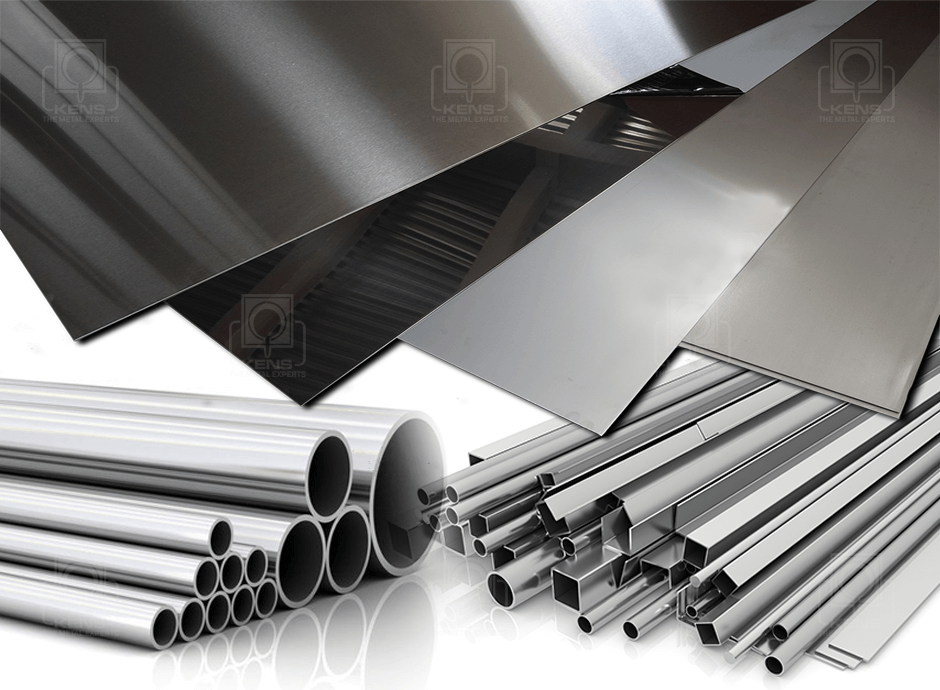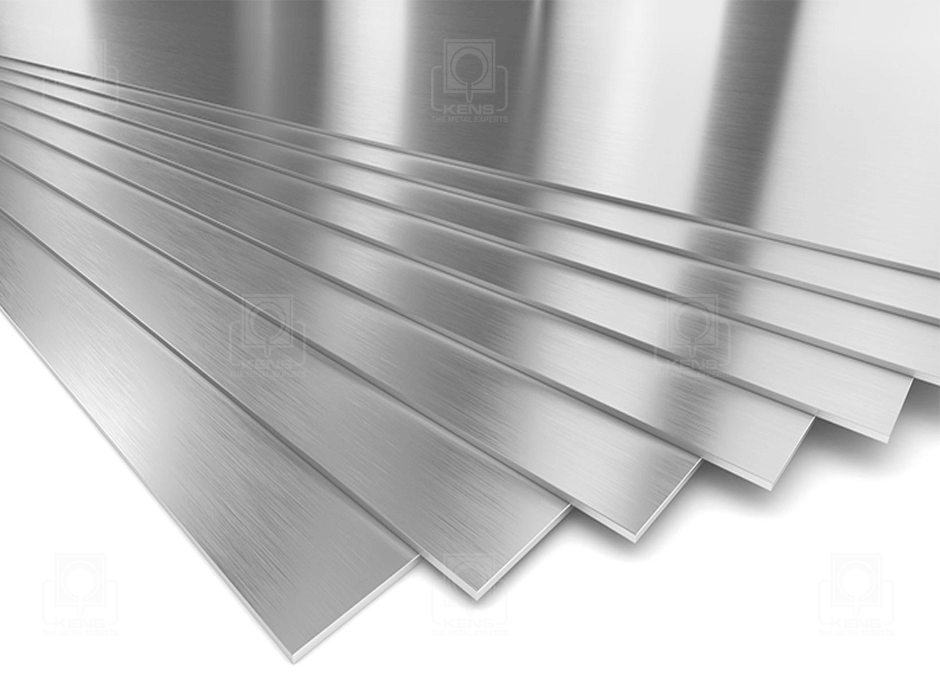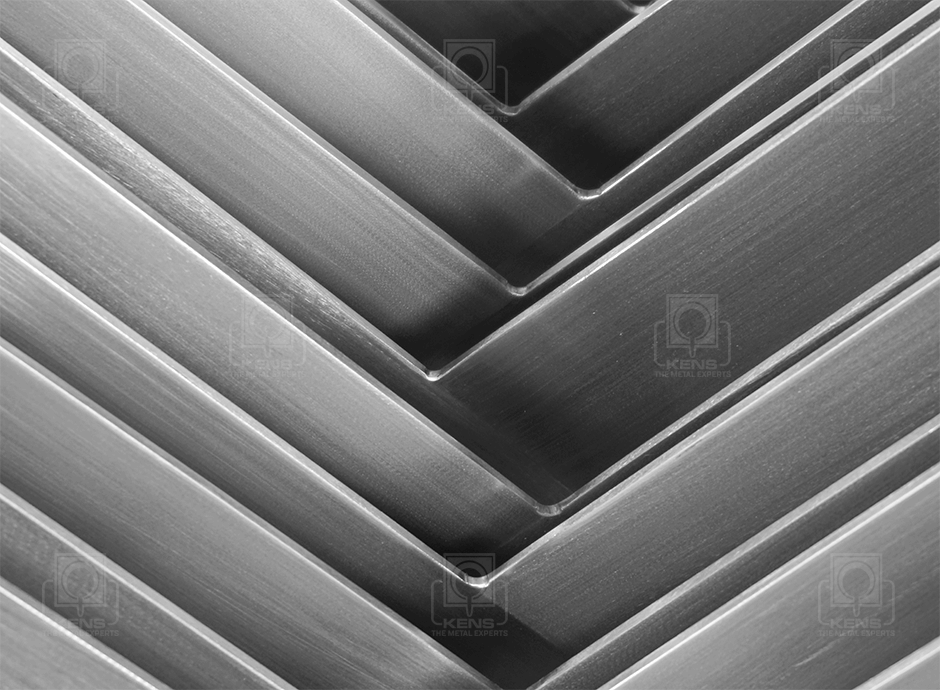Type 304, with its chromium-nickel content and low carbon, is the most versatile and widely used of the austenitic stainless steels. Its alloys are all modifications of the 18% chromium, 8% nickel austenitic alloy. Its chemical composition, mechanical properties, wield ability, corrosion and oxidation resistance provide the best all-round performance stainless steel at relatively low cost. It also has excellent low temperature properties and responds well to hardening by cold working.

Chemical Properties
| Grade | C | Mn | Si | P | S | Cr | Mo | Ni | N | |
|---|---|---|---|---|---|---|---|---|---|---|
304 |
min. max. |
- 0.08 |
- 2.0 |
- 0.75 |
- 0.045 |
- 0.030 |
18.0 20.0 |
- | 8.0 10.5 |
- 0.10 |
Mechanical Properties
| Grade | Tensile Strength (MPa) min | Yield Strength 0.2% Proof (MPa) min | Elongation (% in 50 mm) min | Hardness | |
|---|---|---|---|---|---|
| Rockwell B (HR B) max | Brinell (HB) max | ||||
| 304 | 515 | 205 | 40 | 92 | 201 |
G304 is used in Industrial, Commercial and Domestic fields because of its good corrosion and heat resisting properties. Some applications include Food processing equipment, particularly in beer brewing, milk processing & wine making, Kitchen benches, sinks, troughs, equipment and appliances, Architectural paneling, railings & trim, Chemical containers, Heat Exchangers
Grade 316 is the standard molybdenum-bearing grade, second in importance to 304 amongst the austenitic stainless steels. The molybdenum gives 316 better overall corrosion resistant properties than Grade 304, particularly higher resistance to pitting and crevice corrosion in chloride environments.

Chemical Properties
| Grade | C | Mn | Si | P | S | Cr | Mo | Ni | N | |
|---|---|---|---|---|---|---|---|---|---|---|
316 |
min. max. |
- 0.08 |
- 2.0 |
- 0.75 |
- 0.045 |
- 0.03 |
16.0 18.0 |
2.00 3.00 |
10.0 14.0 |
- 0.10 |
Mechanical Properties
| Grade | Tensile Strength (MPa) min | Yield Strength 0.2% Proof (MPa) min | Elongation (% in 50 mm) min | Hardness | |
|---|---|---|---|---|---|
| Rockwell B (HR B) max | Brinell (HB) max | ||||
| 316 | 515 | 205 | 40 | 95 | 217 |
Typical applications for 316 include boat fittings and structural members; architectural components particularly in marine, polluted or industrial environments; food and beverage processing equipment; hot water systems; and plant for chemical, petrochemical, mineral processing, Pharmaceutical & other industries. Architectural applications in highly corrosive environments.
Although 316 is often described as the 'marine grade', it is also seen as the first step up from the basic 304 grade.
Alloy 309/309S austenitic stainless steel is typically used for elevated temperature applications. Its high chromium and nickel content provides comparable corrosion resistance, superior resistance to oxidation and the retention of a larger fraction of room temperature strength than a common austenitic Alloy 304.

309 is a highly alloyed austenitic stainless steel used for its excellent oxidation resistance. high temperature strength and creep resistance. The lower nickel content of SX309 improves resistance to sulphur attack at high temperature. It is though and ductile. and can be readily fabricated and machined.
| Element | Content (%) |
|---|---|
| Chromium, Cr | 24 |
| Nickel, Ni | 15 |
| Manganese, Mn | 1 |
| Silicon, Si | 1 |
| Carbon, C | 0.080 Max |
| Phosphorous, P | 0.045 Max |
| Sulfur, S | 0.030 Max |
| Mechanical Properties | Metric |
|---|---|
| Tensile strength, ultimate | 620 MPa |
| Tensile strength, yield (0.2%) | 310 MPa |
| Elongation at break (in 50 mm) | 45% |
| Hardness, Brinell (converted from Rockwell B hardness) | 147 |
| Hardness, Rockwell B | 85 |
The major applications of grade 309S stainless steel includes Oven linings, Boiler baffle, Fire box sheets, Furnace components & Other high temperature containers.
G205/ 201A has extremely high strength, it also provides some advantages over G304 in certain structural applications. Presence of copper in this steel reduces work hardening rate and improves draw ability. Nitrogen improves resistance to printing corrosion. The alloy is nonmagnetic in annealed condition like G304. Thus G205 can display a wide range of mechanical strength depending on the degree of cold working, which is essential for certain structural applications.

| Chemical Composition % 205 | |
|---|---|
| Carbon (C) | 0.12 Max |
| Silicon (Si) | 0.75 Max |
| Manganese (Mn) | 10.0 Max |
| Chromium (Cr) | 14.00 - 16.00 |
| Nickel (Ni) | 0.9 - 1.7 |
| Phosphorous (P) | 0.075 Max |
| Sulfur (S) | 0.030 Max |
| Copper (Cu) | 2.2 Max |
| Nitrogen (N) | 0.20 Max |
| Grade | 205 |
| Uts (Mpa) | 650 min |
| Ys (Mpa) | 325 min |
| % Elongation | 40 min |
| Hadrness (Hrb) | 100 Max |
AISI 205 is used in making utensils such as shallow or medium drawn utensils, tableware, cutlery, stands for water filters and In-house water tanks. Consumer durables such as steel furniture, fruit stands, flower vases, decorative pipes and tubes, gas stoves and gift items can be made from AISI 205. Architecture building and construction companies use AISI 205 to make in-house panels, hands rails, Structural support framework, door knobs, hinges and dust bins. AISI 205 can also be used to transport items via conveyors.
This Grade is not recommended for use for external purposes in coastal/ salty environment. It is also not recommended for handling/storage of acid and other highly corrosive industrial chemicals
Stainless steel grade 430 is a non-hardenable steel containing straight chromium, and belongs to the ferritic group of steels. This steel is known for its good corrosion resistance and formability, coupled with practical mechanical properties that Grade 410. G430 is magnetic in all conditions.

Chemical Properties
| Grade | C | Mn | Si | P | S | Cr | Ni | |
|---|---|---|---|---|---|---|---|---|
430 |
min. max. |
- 0.12 |
- 1 |
- 1 |
- 0.04 |
- 0.030 |
16 18 |
- 0.50 |
Mechanical Properties
| Grade | Tensile Strength (MPa) min | Yield Strength 0.2% Proof (MPa) min | Elongation (% in 50 mm) min | Hardness | |
|---|---|---|---|---|---|
| Rockwell B (HR B) max | Brinell (HB) max | ||||
| 430 | 483 | 310 | 22 | 85 | 183 |